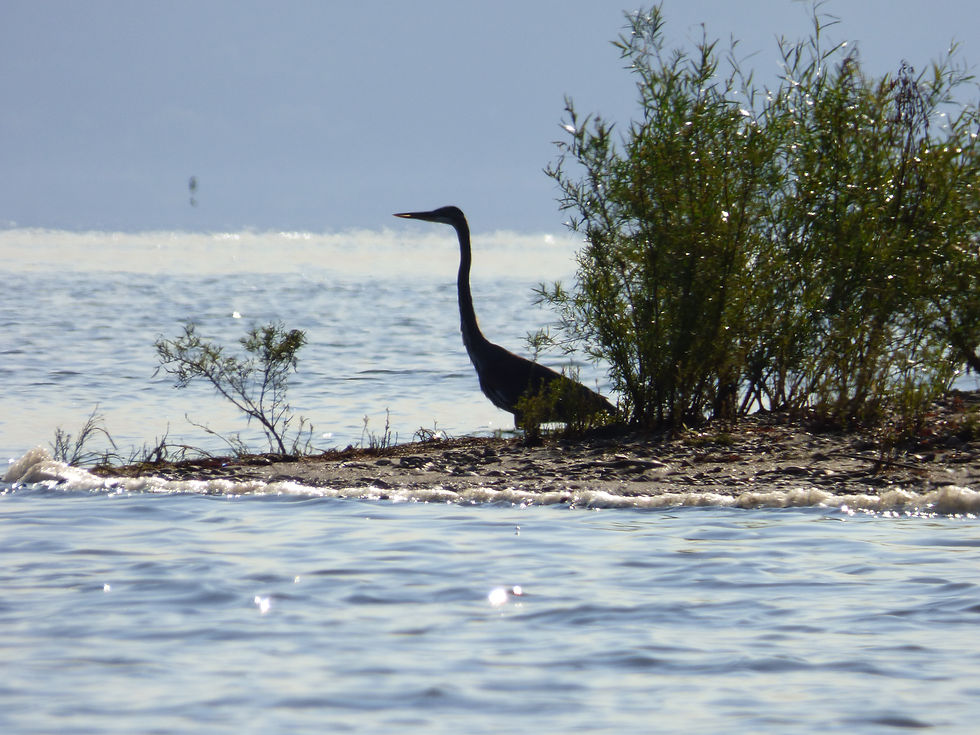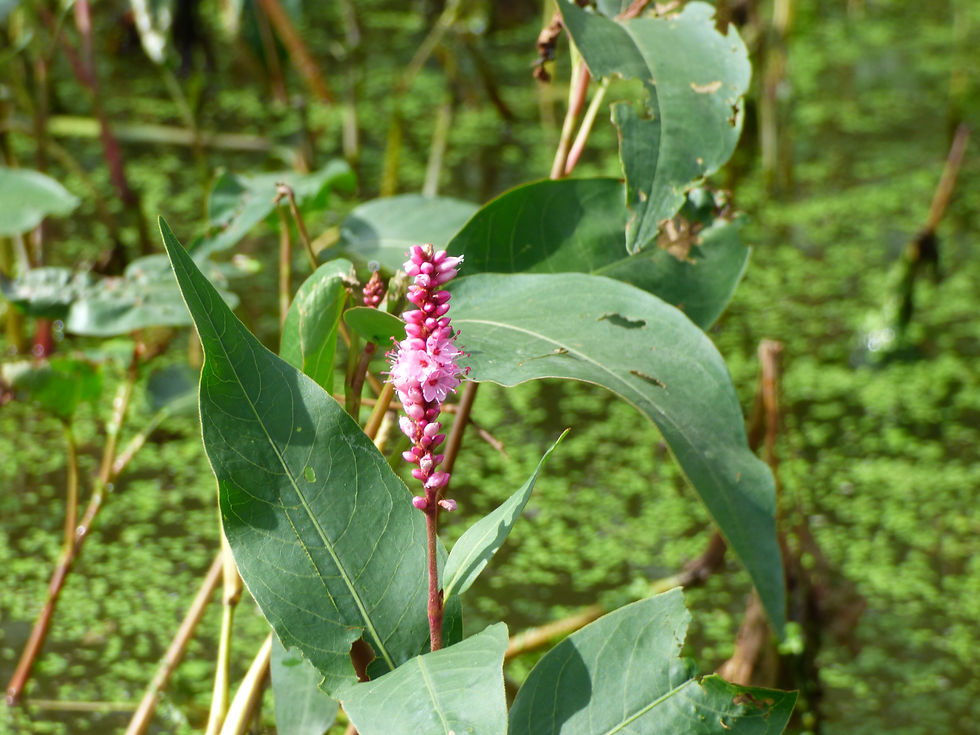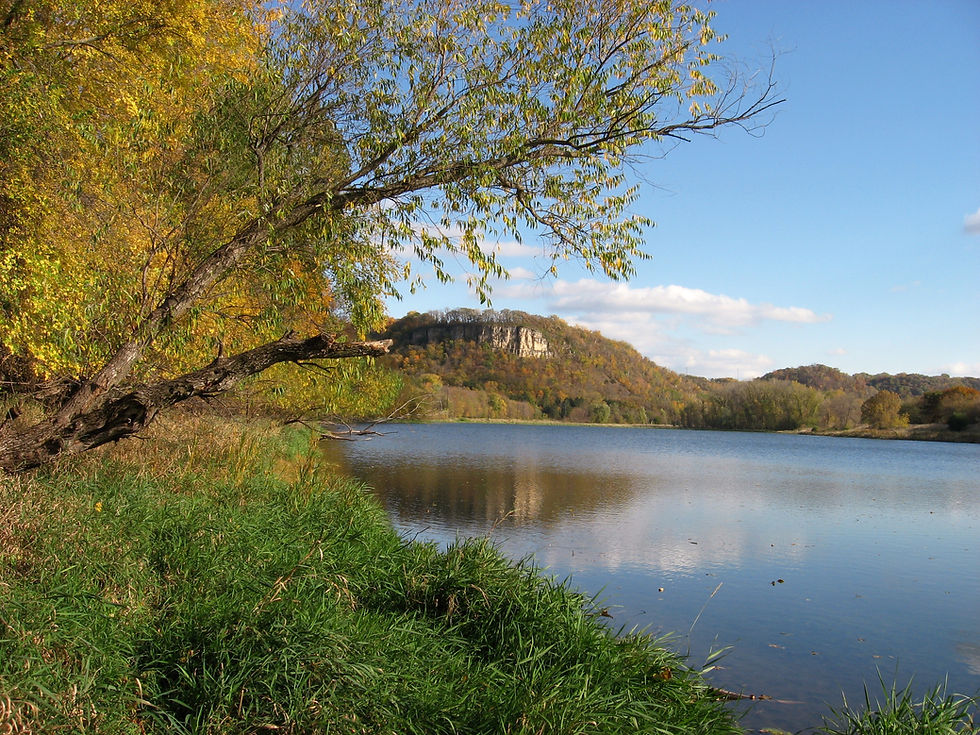" Late Summer Colors Around Wacouta Bay"
- wacoutanaturenotes
- Sep 5, 2025
- 3 min read
With the rise in the river levels following the heavy rain events of August 14 and 17, I decided to paddle my solo canoe around Wacouta Bay early in the morning of August 20. This adventure yielded several exciting and colorful observations.

My first surprise of the morning was sighting this juvenile green heron. It had a very sharp squawk as it took flight. This small heron is generally very solitary preferring marshes and often perches in nearby trees.
By the time I had paddled completely around the bay, eight additional green herons had been sighted. My first thought was their fall migration had begun.

Another more common heron I observed that morning was the Great Blue Heron. With the shallow backwaters of Wacouta Bay supporting small fish, amphibians and tiny mammals, there is an abundance of food supply for these birds.
Even though it is common to observe these birds all summer, as we get closer to mid-October it will be quite common to see upwards of 30 to 40 herons in a single morning of paddling around the bay. At that point in time, their fall migration is in full swing.

This past spring/summer, there were 4 active eagle nests around the bay. It wasn't that many years ago, the prevailing thought was eagle nests had to be separated by two or three miles.
With the eagle population increasing dramatically, they have become more socially tolerant of each other. I observed this pair near one of those successful nests. Given their young eaglets had fledged a couple months ago, they were no doubt discussing the challenges of empty nest syndrome.

Near the northwest corner of the bay, there is a quaint and isolated pocket of water accessible only in high water. This area has no current and is safe from big wind events. These conditions are ideal for a tiny, fast growing and floating aquatic plant known as duckweed.
This plant is known for it's ability to absorb nutrients from the water creating ideal fish and waterfowl food. The seclusion of this location reminded me of a family experience we had years ago in the Okefenokee Swamp in southeast Georgia.

Another colorful aquatic plant I came across was swamp smartweed. The nutritious seeds from this plant are preferred by several species of waterfowl. Many years these seeds are available long after other food sources have been depleted.

By far the most colorful flower I came across was the Hibiscus known as Rose Mallow. This plant originated in Africa and has been used as a medicinal as well as an ornamental plant.
Since Egyptian time (2000 BC), the sap from this plant was made into a confection. It has further evolved into our present day marshmallow.

An abundant colorful wildflower along the wooded section at the west end of the hiking trail as well as damp areas adjacent to the bay the past couple weeks is the Pale Touch-Me-Not. This plant is sometimes referred to as jewelweed. Droplets of dew on the leaves and flowers give the appearance of tiny jewels.
The juice from the succulent stem has long been used as an antidote for poison ivy and stinging nettles.
Before moving to Red Wing, our family lived in the resort country of Aitkin County. We became aware of a retired resident who harvested large bundles of this plant and ran them through the ringers of their old washing machine. After bottling up the juice, he would offer them for sale at nearby family resorts.

Starting August 26th, we started noticing large flocks of blackbirds flying over our home just before sunset. Huge congregations of common grackles, red-winged blackbirds and brown-headed cowbirds, all members of the blackbird family fly from their feeding grounds to where they roost in the river bottoms.
At this time of year a favorite feeding area would be the numerous cornfields nearby. The birds are attracted to the milk stage kernels and rootworm beetles.

In the morning, the route is reversed. Depending on the distance travelled, they will stop and rest in various large trees. As we get closer to October, the number of birds in these flocks can reach into the hundreds.

Thanks to Steve Betcher's photo taken on August 28th, we have documentation "White Lightning" is alive and doing quite well.
For the past month, Kathy and I have observed the goat coming out to the edge of Rattlesnake Bluff at least twice a week. It usually makes it's appearance about one hour prior to sunset. With the cold change in weather, it needs to think positive about the upcoming winter




Why is it called a green heron when it looks blue?
Thank you, Bruce, for a reminder of the wonder of our surroundings, that we never take for granted.
Again, thank you for the wonderful photos and sharing your knowledge!
Scott and I enjoy your pictures and learn so much every time. It is such a treat to have you explain the nature we are so lucky to have all around us. White Lightening is certainly the King of the Bluff!
Thank you again Bruce for your great photography and information. I was happy to see the green heron, as I haven’t seen one for a long time. I am hoping White Lightning makes it through the winter.